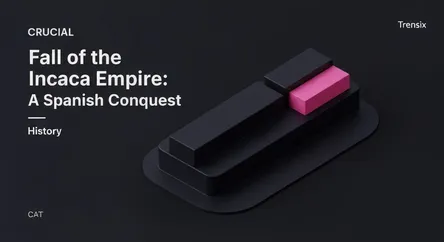History
Fall of the Inca Empire: A Spanish Conquest

The story of how a small group of Spanish conquistadors led by Francisco Pizarro brought down the mighty Inca Empire in the 16th century.
What is it?
The Spanish conquest of the Inca Empire was one of the most significant campaigns in the colonization of the Americas. Beginning in 1532, a small force of Spanish soldiers, led by conquistador Francisco Pizarro, initiated a decades-long conflict against the vast Inca Empire. The empire, weakened by a recent civil war between two brothers, Huáscar and Atahualpa, was vulnerable. Pizarro's 168 soldiers cleverly exploited these internal divisions. A pivotal moment was the Battle of Cajamarca, where the Inca emperor Atahualpa was captured. Despite a massive ransom being paid, the Spanish executed Atahualpa in 1533, effectively decapitating the empire and plunging it into chaos.
Why is it trending?
This historical event remains a compelling topic due to its dramatic nature—a small, determined force overcoming a massive empire. It serves as a crucial case study in military strategy, cultural collision, and the profound impact of European colonization in the Americas. The conquest was a turning point that led to further Spanish campaigns into other parts of South America, including modern-day Chile and Colombia. The tactics used by Pizarro, who was inspired by Hernán Cortés's earlier conquest of the Aztecs, are still analyzed today. The fall of the Incas continues to fascinate historians and the public, highlighting a pivotal moment in world history.
How does it affect people?
The conquest had devastating long-term effects on the indigenous population and irrevocably shaped the future of South America. The Spanish dismantled the Inca political and social structure, imposing their own language, religion, and culture on the native people. This led to the destruction of much of the Inca culture and the beginning of centuries of Spanish rule under the Viceroyalty of Peru. The conflict and diseases introduced by the Europeans caused a massive demographic collapse. For people today, this event marks the beginning of a complex and often painful history of cultural blending and colonial legacy that defines modern Peru and much of the continent.